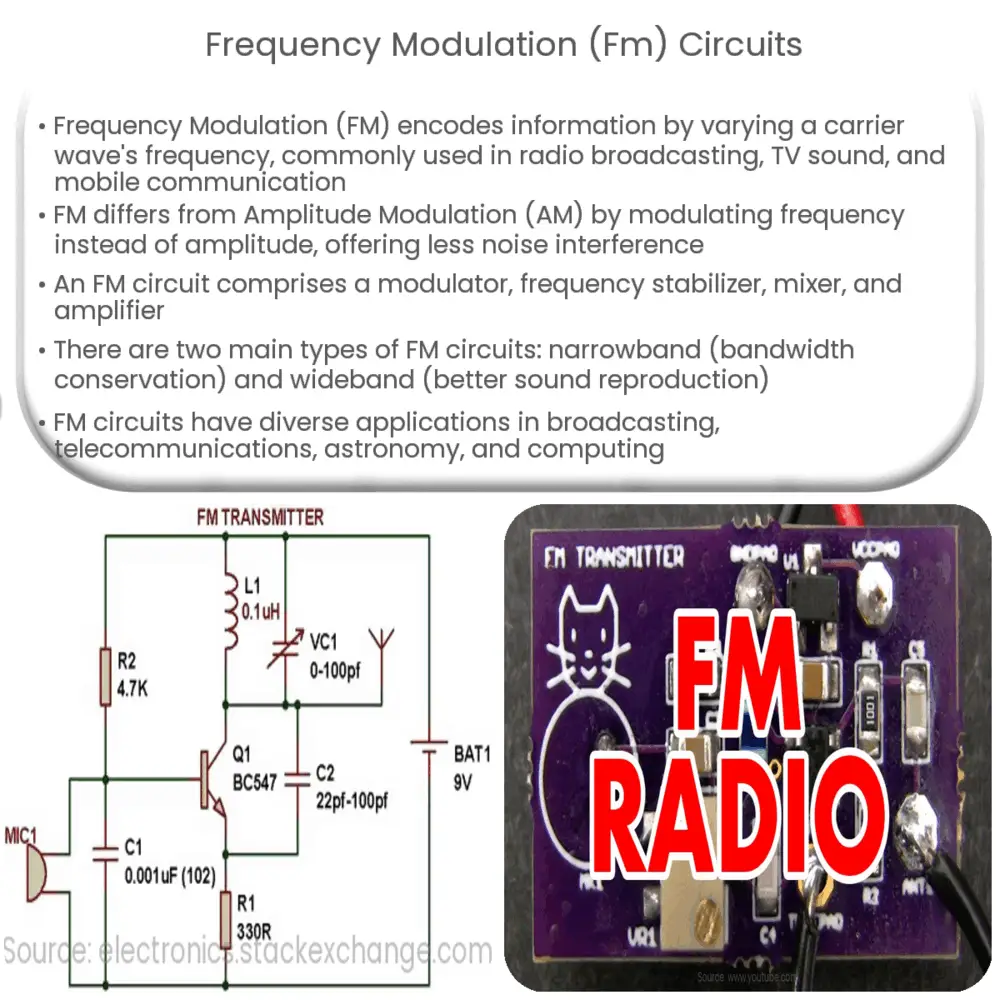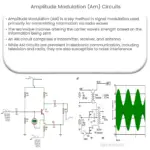Explore the principles of Frequency Modulation (FM) circuits, their components, functioning, types, and varied applications in our daily life.

Understanding Frequency Modulation (FM) Circuits
Frequency Modulation (FM) is a form of modulation that encodes information in a carrier wave by varying its frequency. This widely-used form of signal transmission is commonly seen in areas such as radio broadcasting, television sound, and mobile communication. It’s the fundamental principle upon which FM radio operates. In order to fully understand FM circuits, we need to delve deeper into the theory of Frequency Modulation, the core components of FM circuits, and how these components function together.
The Principle of Frequency Modulation
In FM, the frequency of a carrier signal is varied in accordance with the instantaneous value of the modulating signal. This is different from Amplitude Modulation (AM), where the carrier signal’s amplitude is varied instead. Frequency modulation has a significant advantage over amplitude modulation as it is less susceptible to noise interference, making it an excellent choice for high fidelity sound reproduction in broadcasting.
Components of an FM Circuit
An FM circuit typically consists of four main parts:
- Modulator: The modulator combines the carrier wave with the input signal to produce a frequency-modulated signal. This is where the actual frequency modulation takes place.
- Frequency Stabilizer: This component stabilizes the frequency of the carrier wave, ensuring a steady, unvarying frequency when no modulating signal is present.
- Mixer: The mixer takes two or more inputs and produces an output that contains the frequency characteristics of the inputs.
- Amplifier: The amplifier boosts the power of the frequency-modulated signal, making it strong enough for transmission.
Now that we understand the basic components of an FM circuit and their functions, let’s take a closer look at how an FM circuit works, the types of FM circuits, and their applications in various fields.
How an FM Circuit Works
The process begins when the modulating signal, which is the information to be transmitted, is combined with the carrier signal in the modulator. The resulting signal is then fed to the frequency stabilizer. The stabilizer ensures that the carrier frequency remains constant in the absence of a modulating signal. This frequency-stabilized signal is then sent to the mixer.
The mixer combines the frequency-stabilized signal with another input signal. This mixing generates an output signal that contains the frequency characteristics of the two inputs. Finally, the mixed signal is amplified and then sent for transmission.
Types of FM Circuits
There are mainly two types of FM circuits:
- Narrowband FM Circuits: These are used when the modulation index is small, typically less than one. This is common in communication systems where bandwidth conservation is crucial.
- Wideband FM Circuits: These are used when the modulation index is greater than one. They offer better sound reproduction and are commonly used in FM broadcasting.
Applications of FM Circuits
FM circuits find a wide range of applications, not just in broadcasting and telecommunications, but also in other fields such as astronomy and computing. They are used in FM radios, television sound transmission, mobile communication systems, and satellite communication. In astronomy, FM circuits help study celestial bodies, while in computing, they are used in data transfer systems.
Conclusion
In conclusion, Frequency Modulation (FM) circuits form an integral part of many electronic and communication devices that we use in our daily lives. Their ability to reduce noise interference and provide high fidelity sound reproduction has made them an excellent choice in many broadcasting and communication systems. Understanding the fundamentals of FM circuits, their types, and their varied applications can offer profound insights into how information is transmitted in our increasingly connected world.



